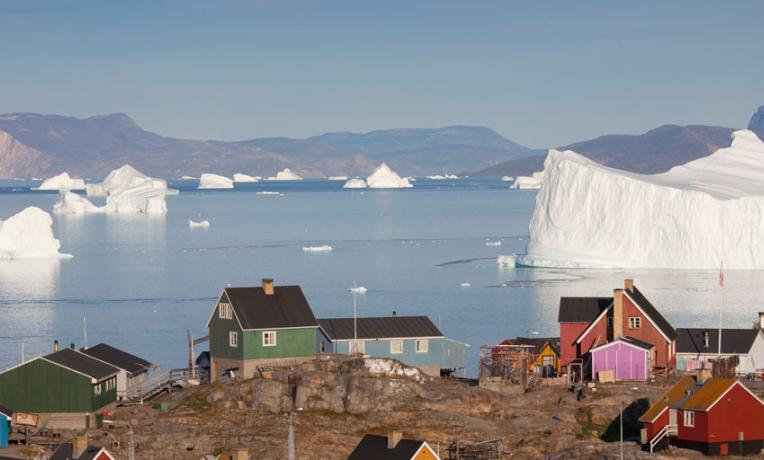Climate change: How on Earth to draw the boundary lines?

Johan Rockstrom, you have become a well-known figure in climate change science. Tell us about your academic background and how you became interested in this area.
In the early 1990s, my initial field of interest and PhD focus was very down to earth, on sustainable management of freshwater resources, in particular on hydrology and food production. I rapidly realised that I had to connect water management at watershed and river basin scales with the global hydrological cycle and climate change, as I increasingly saw evidence that even local farming systems were impacted by climate change. Through my water research, ranging from local water harvesting to global water demand for food, I increasingly realised that when faced with growing evidence of global environmental change, there could be no such thing as sustainable or resilient development locally unless global challenges were also addressed. So, from the very beginning, I came at climate change research from the bottom up.
I then became head of the Stockholm Environment Institute where we were directly involved in the whole climate science challenge, ranging from climate policy through the COP process and the global science assessments through the IPCC. Through this work, and emerging from the scientific community in general, there was, in the wake of the new Millennium, a rising recognition that the world was moving fast in the wrong direction and taking enormous global risks that could threaten the ability of the Earth system to provide stable environmental conditions for world development. It was in 2002 that Nobel Laureate Prof. Paul Crutzen, a founding member of the ERC, published the seminal paper suggesting (based on the exponential rise in human pressure on Earth since the early 1950s) that humanity may now have entered a completely new geological epoch, the Anthropocene, in which the human world constitutes the largest driver of change on Earth.
In 2007, I co-founded the Stockholm Resilience Center, together with Prof. Carl Folke. We recognised that Earth system science had advanced so far, and evidence of global environmental risks had reached such a magnitude, that the time was ripe to gather scholars across all disciplines with direct links to the functioning of the Earth system - not only climate scientists but oceanographers, glaciologists, atmospheric and biodiversity scientists. The research question we posed was - what are the processes that regulate the stability of the Earth system? For each of these processes and systems, we also attempted to define the boundaries that could provide scientific support for a safe operating space on Earth within which our world, and our social systems, can evolve on a stable Earth system, but beyond which we risk non-linear, irreversible and potentially disastrous trajectories.
Your ERC project "Earth Resilience in the Anthropocene" (ERA) also studies non-linear processes. Can you explain what they are, and how your project will help combat climate change?
Today we understand that Earth is a highly interconnected complex system where all processes – such as the carbon and hydrological cycles, and systems like the atmosphere and biosphere - interact together. The Earth's temperature is not only determined by how much carbon dioxide is released into the atmosphere from fossil-fuel burning and deforestation, but is also a result of how the climate system interacts with forest, soils and oceans, for example. All of these interactions are regulated by feedback mechanisms, which either buffer and dampen stress/pressures (negative feedback) or self-reinforce change (positive feedback), and thereby determine whether it is a desirable or unwanted outcome for humankind.
For the last 12,000 years, since the end of the last Ice Age, Earth has been in an interglacial state of phenomenal stability. This is the geological epoch called the Holocene, in which any shifts or (non-linear) variations to the Earth's natural systems - either as a result of human action such as pollution or a natural event such as a volcanic eruption - have been largely dampened or moderated by the Earth's natural feedback mechanisms. But this predictability and stability can only occur as long as the planet is resilient. When Earth resilience is gradually lost, for example through deforestation and biodiversity loss, feedback mechanisms are prone to change direction from being dampening to self-reinforcing, producing an undesirable situation.
For example the 2015/2016 El Nino event is a form of natural non-linear shift that occurs when the heat normally stored in the Pacific ocean current is abruptly released back into the atmosphere. Oceans absorb some 95 % of the heat caused by our emissions of greenhouse gases, a massive moderating effect. El Nino is an example of a sudden - natural - shift in feedback to self-reinforcing heat, with strong and abrupt effects on weather systems, such as more severe droughts and floods. The aim of our ERC-funded project is to advance the science and better understand where the safe boundaries are, within which the overall mix of feedback on Earth safely remains negative, i.e. that the Earth’s resilience level remains sufficient to ensure stable life support systems on our planet.
The science of defining planetary boundaries, within which we have a good chance of maintaining a stable Earth system, emerges from the very worrying and rising scientific recognition that the human race can act to destabilise the entire Earth system. This is, as I see it, perhaps our most important scientific challenge.
Another aim of my ERC research, apart from advancing the planetary boundaries framework, is to analyse at what mean global temperature rise - caused by humans through emissions of greenhouse gases - do we face the risk of pushing the Earth system beyond thresholds and lead to self-reinforced, further global warming, caused by the biosphere rather than humans alone.
You were recently at the WEF Davos summit where you discussed the "4th Industrial Revolution". How can fundamental research help steer us towards the desired prosperous and resilient, zero-carbon future?
My invitation to participate and share research in a number of sessions at Davos is a good indicator of the rise in recognition by the business and political elites that global environmental risks and global sustainability are absolutely central to world economic development. This was also strongly mirrored in the WEF 2018 global risk report that rated global environmental risks at their highest levels ever, in terms of threats to the world economy.
Science is already a generator of innovation and technological advancements and in effect the engine of the 4th Industrial Revolution. Scientific evidence is fundamental to guide the transformation of the 4th Industrial Revolution towards a scientifically defined polestar that would ensure that the next exponential rise in technology and wealth occurs within the safe operating space of a stable planet. My personal hypothesis is that economies and industries that embark on the 4th Industrial Revolution will generate additional gains above and beyond what was originally envisaged, by introducing more and deeper innovations that would be necessary to meet boundaries imposed by sustainability criteria, such as the need to ensure products are carbon neutral. Such innovations would include batteries for self-driving trucks or the next generation of electric jet aircrafts.
Working with the ERC at the 2018 World Economic Forum at Davos:


